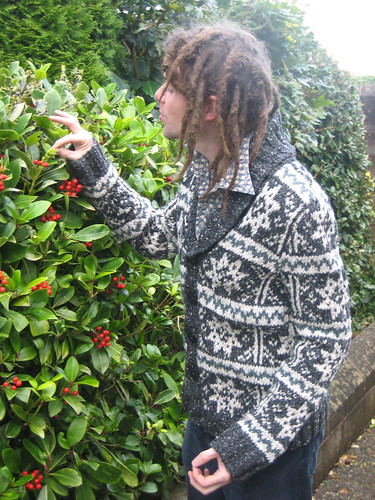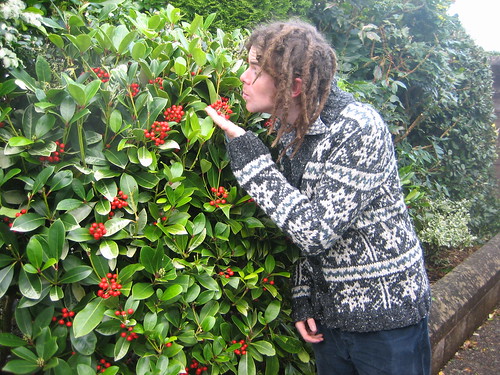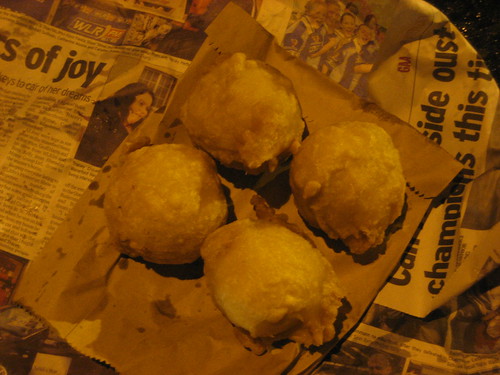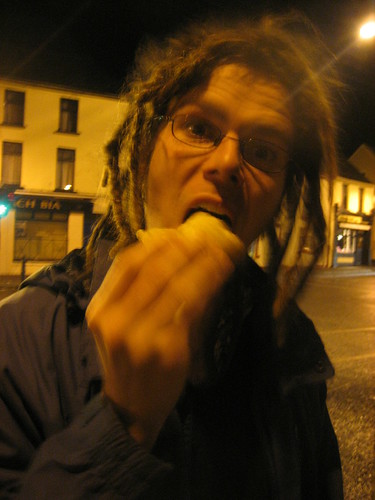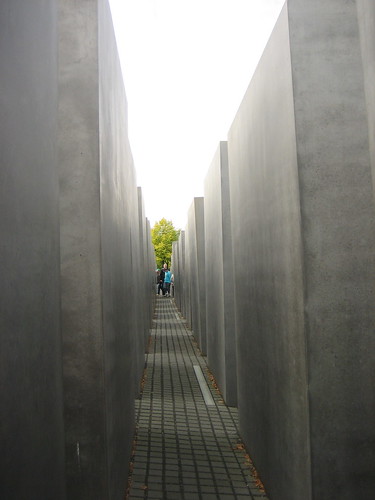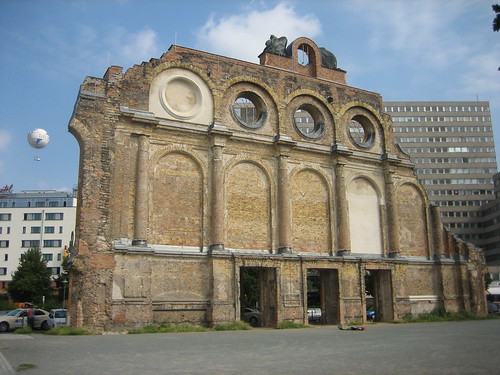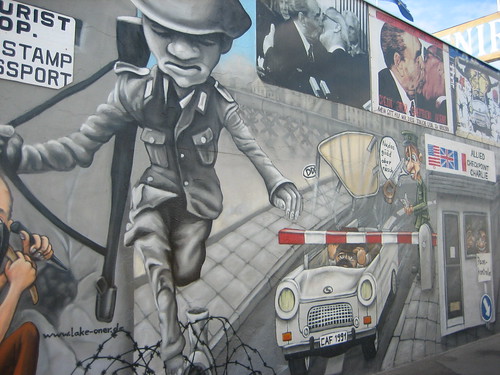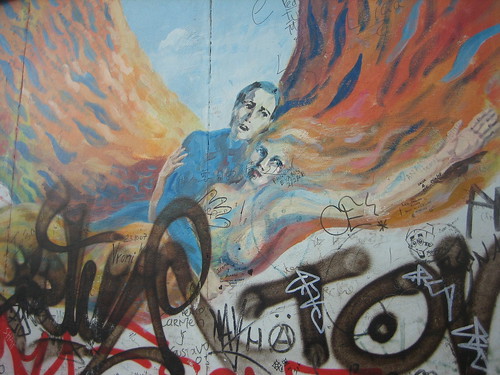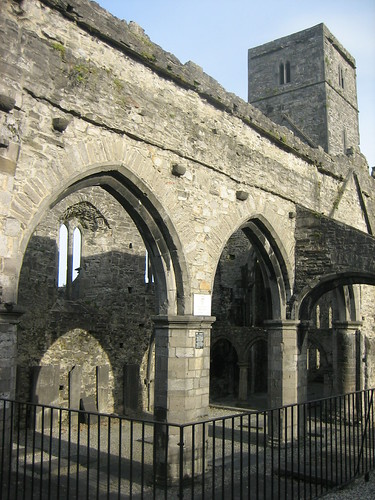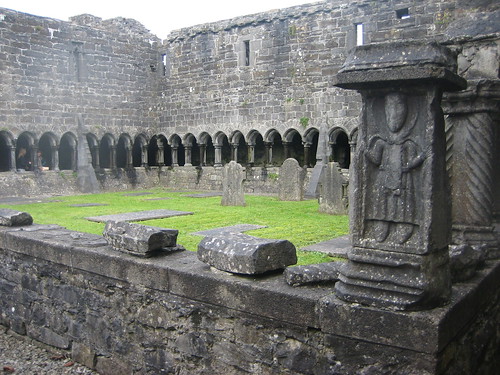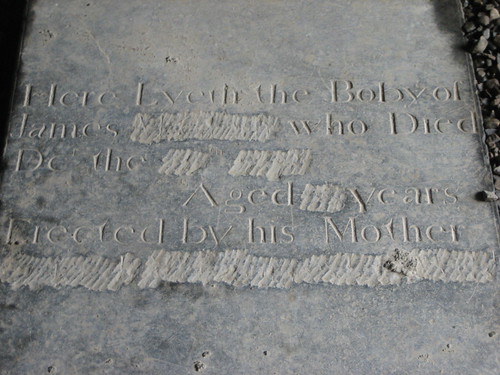Last week I posted a video clip of the unusual disco ball at the Kunsthaus Tacheles, definitely one of the coolest/weirdest spots in Berlin. Artists moved into this bombed-out department store after the fall of the Berlin Wall, and it has bars, a café, and a nightclub as well as artists' studios.
You walk through an archway (handmade jewelry for sale beside an old van covered in graffiti, and set into the wall above are majestic stone figures dating to the building's first act) and out into an open sandy space with car seats set around picnic tables as well as random sculptures, all from found materials, like so:
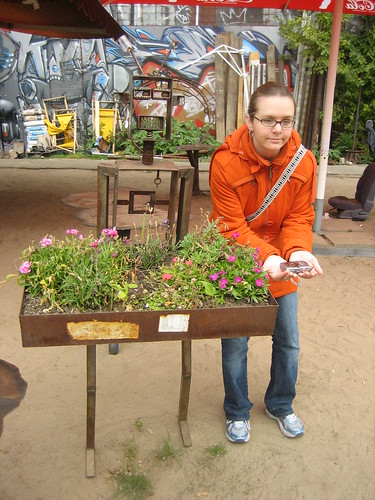 There is graffiti on almost every surface, especially on the stairwells that lead to the studios and galleries upstairs. Alas, none of my interior or nighttime photos are good enough to show you.
There is graffiti on almost every surface, especially on the stairwells that lead to the studios and galleries upstairs. Alas, none of my interior or nighttime photos are good enough to show you. This courtyard space felt like a playground for those of us who will never consider ourselves grown-ups.
This courtyard space felt like a playground for those of us who will never consider ourselves grown-ups.Something else I didn't get a picture of was a huge rocket-shaped metal thingie in the yard that had a metal ladder (like you'd see inside a submarine) leading up to a dark round opening near the top. I told some of the people on our pub crawl (I had been there earlier in the day, and so could speak with authority) that it was known as The Vomit Rocket, and that they should climb up the metal ladder and do what they must, but fortunately nobody had had that much to drink.
But my favorite part of all was in a hallway upstairs: a full-sized "photo booth" fashioned out of cardboard, with space for both the artist and his subject to sit. Along with a very modest price list, a sign read (in English):
Choose Your Master:
—Cranach
—Michelangelo
—Picasso
—Michelangelo
—Picasso
